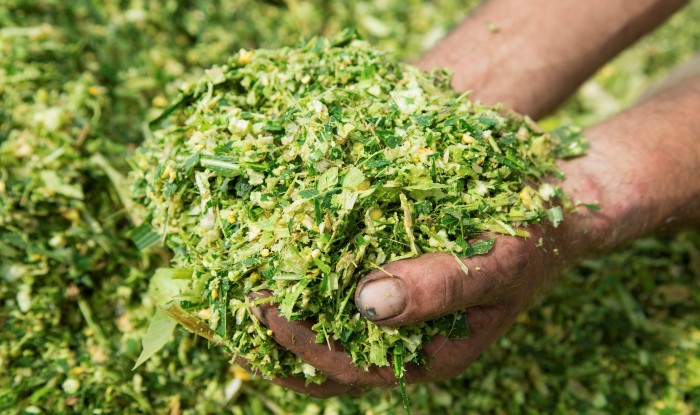Testing maize silage more regularly can help maximise the benefits of bypass starch and reduce the potential threat of acidosis.
New maize silage tests from Eurofins can measure the extent to which bypass starch has degraded in the clamp to help prevent unnecessary acidosis through overfeeding. “Our reports provide the information to accurately feed maize silage based on bypass starch levels. This can help prevent too much maize silage in the ration which can lead to acidosis,” said Eurofins Agro managing director, Daniel Robinson.
Tests also show that the level of bypass starch in maize silage decreases during storage. If the level is not measured accurately, and frequently, the risk of acidosis increases. “Having silage analysed again in spring helps to prevent rumen acidosis. Our research shows that bypass starch decreases during storage which makes the silage digest faster in the rumen. If farmers do not adjust the ration, to cater for this decrease in bypass starch, there is a higher risk acidosis,” explained Mr Robinson.
Eurofins suggests that the maximum bypass starch processing capacity of the small intestine is between 1500 and 1750 grams a day, which corresponds to approximately six to seven percent of bypass starch in the total ration. “By calculating bypass starch accurately in maize silage, farmers can maximise the available energy to the cow and increase milk protein production,” he said.
By cross referencing variety, drilling and harvest dates with the test data from dry near-infrared spectroscopy (NIRS) tests offered by Eurofins, dairy farmers can also be better equipped to maximise the value of the crop and its role in the TMR. “By identifying parameters like bypass starch, we can help farmers to choose the right maize and analyse it in the clamp to increase milk yields whilst safeguarding against potential acidosis,” he said.
To influence the bypass starch in the clamp a further evaluation of maize variety and starch structure can help to influence drilling and harvesting decisions. “Choosing flint or dent maize and recording the drilling and harvest dates can help farmers to essentially join up the dots. Flint maize can be 20 percent higher in bypass starch than dent, therefore understanding what is going into the clamp can help to ascertain what is likely to be available when silage is fed,” concluded Mr Robinson.



